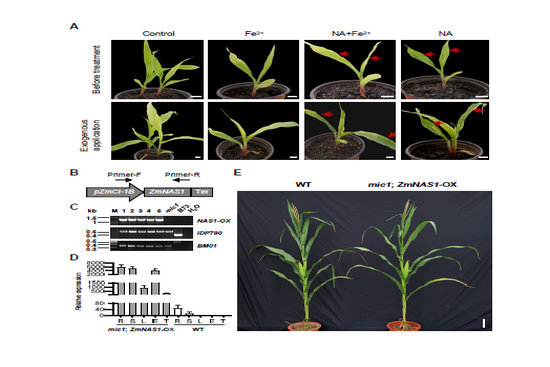Scientists ofthe Crop Metabolic Regulation and Nutritional FortificationDepartment, Biotechnology Research Institute, Chinese Academy of Agricultural Sciences have recently uncovered a novel Fe homeostasis mechanism in crops. They elaborated that the Yang Cycle affects iron uptake and transport by regulating nicotianamine (NA) synthesis in graminaceous plants. This study provides gene resources and a theoretical basis for breeding iron-fortified crops, and the correspondingmechanism has been published in <Plant Physiology>.
Iron is an essential trace mineral element for the growth and development of the human body and plants. Iron deficiency in the human diet leads to health problems such as anemia, affecting more than one billion people. Besides, insufficient iron intake leads to substantial yield reduction of crops. Therefore, understanding the regulatory mechanism of iron uptake and transportin plantscontributes to the breeding of iron-fortified crops and thereby alleviates anemia and other health problems caused by iron deficiency. It is well known that plants produce iron chelators (NA and phytosiderophores)to uptake and transport iron.The Yang cycle is a classic metabolic cycle essential for sustaining high rates of ethylene and PA synthesis in plants. NA is also an extended product of the Yang cycle,whereas the relationship between NA biosynthesis and the Yang cycle remains unclear in crops.
Maize Interveinal Chlorosis 1 encodes a 5’-methylthioadenosine nucleosidase, which is essential for 5’-methylthioadenosine salvage, the first reaction of the Yang cycle. The mic1 mutant displays interveinal chlorosis phenotype and growth retardation, with reduced iron levels in seedlings. Further analysis revealed that irondeficiency of mic1 is caused by nicotinamide metabolism disorders, though the phenotype is similar to that of known iron-transporter mutants. Then, the interaction between NA biosynthesis and the Yang cyclewas finally confirmed by exogenous and in vivo supply of NA to the mic1 mutant. These findings shed light onanovel aspect of Fe homeostasis regulation in maize and provide a theoretical basis for breeding iron-rich maize varieties.
This work,collaborated with the National Maize Improvement Center in China Agricultural University, was supported by the National Key Research and Development Program of China, the Modern Maize Industry Technology System, the National Natural Science Foundation of China, and the National Special Program for GMO Development of China.

Link for this paper:
https://academic.oup.com/plphys/advance-article-abstract/doi/10.1093/plphys/kiac009/6517793?redirectedFrom="fulltext |